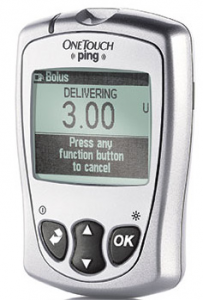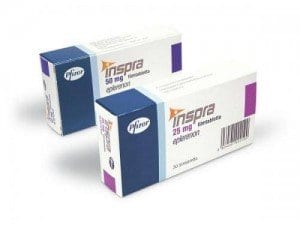 Beans and rice are two ingredients that are common to many meals in the typical Western diet. However, a study conducted in Costa Rica has found that lightening up on the rice and eating more beans could be better for overall health.
Beans and rice are two ingredients that are common to many meals in the typical Western diet. However, a study conducted in Costa Rica has found that lightening up on the rice and eating more beans could be better for overall health.
The study, which was conducted on almost 2,000 men and women, found that those who regularly replaced a serving of white rice with a serving of beans were 35% less likely to display precursor symptoms for diabetes. The researchers reported their results in the American Journal of Clinical Nutrition.
“Rice is very easily converted into sugar by the body. It’s very highly processed, it’s pure starch and starch is a long chain of glucose,” said Frank Hu, one of the researchers with the study. Hu is a professor of nutrition and epidemiology at Harvard School of Public Health in Boston, Massachusetts. “Beans compared with rice contain much more fiber, certainly more protein and they typically have a lower glycemic index — meaning they induce much lower insulin responses,” continued Hu. Though beans do contain significant amounts of carbohydrates, the body must work more to break them down, resulting in slower digestion time and a reduced impact on insulin production and blood sugar.
Hu’s research team analyzed the diets of almost 2,000 men and women from Costa Rica, who were participating in a study lasting from 1994 to 2004 that looked at risk factors for heart disease. At the beginning of the study, none of the participants were diabetic.
As with many industrialized nations, Costa Rica has seen its diabetes rates begin to soar. The urbanization of the country, along with its increased wealth, has caused increases in the consumption of white rice; simultaneously, consumption of beans has decreased, according to Hu. This increase in rice consumption could be part of the reasoning behind the nation’s rising diabetes rates: study participants who ate more white rice over a long-term period had higher blood pressure in addition to lower levels of good cholesterol and increased levels of fat and sugar in their blood.
These are well-known risk factors for metabolic syndrome, a series of conditions that dramatically increase risk of developing Type 2 diabetes and heart disease.
While those who ate more rice were at higher risk for metabolic syndrome, individuals who ate two servings of beans for every serving of white rice were usually at lower risk. Such practices of replacing rice with beans reduced the risk of metabolic syndrome by 35%.
While rice generally makes up a significantly larger portion of the average diet in countries outside the U.S., Americans have been consuming more and more rice every year, according to the U.S. Department of Agriculture. In 1980, Americans consumed 9.5 pounds of rice per person every year; in 2008, that number rose to 21 pounds per person. At the same time, Americans have consumed less dry beans — about 7 pounds per year.
Hu says that such an increase in consumption of white rice is dangerous, especially when compared to brown rice. According to Hu, eating white rice “is like eating a candy bar — the fiber and other nutrients are stripped away.” The increases in consumption of white rice “will have long-term metabolic effects,” added Hu. “It would be useful to introduce more legumes, including beans, into our diet to replace white rice and some of the red meat.”
 New research findings relating to low-grade inflammation are sure to cause controversy, as they seem to contradict current mainstream views of diabetes. While increases in low-grade inflammation are commonly believed to be a contributing factor in the development of Type 2 diabetes, a team of researchers at Children’s Hospital in Boston have reported that two
New research findings relating to low-grade inflammation are sure to cause controversy, as they seem to contradict current mainstream views of diabetes. While increases in low-grade inflammation are commonly believed to be a contributing factor in the development of Type 2 diabetes, a team of researchers at Children’s Hospital in Boston have reported that two  A study conducted at the University of Otago in Dunedin, New Zealand, has found that middle-aged women who consume
A study conducted at the University of Otago in Dunedin, New Zealand, has found that middle-aged women who consume  A study recently performed by Israeli researchers and presented in Haaretz, an Israeli daily newspaper, has shown that a 20-minute swim in the Dead Sea could aid diabetics in lowering their blood sugar levels.
A study recently performed by Israeli researchers and presented in Haaretz, an Israeli daily newspaper, has shown that a 20-minute swim in the Dead Sea could aid diabetics in lowering their blood sugar levels. When it comes to texting, teenagers out-type every other age group by a long shot, with some sending thousands of text messages every month. But what if this activity could be used to help teens lose weight? One study aimed to find out whether text messages could be used to promote positive weight management activities in overweight teens, discovering that such at-risk teenagers felt reassured by positive messages but disliked deeper questions.
When it comes to texting, teenagers out-type every other age group by a long shot, with some sending thousands of text messages every month. But what if this activity could be used to help teens lose weight? One study aimed to find out whether text messages could be used to promote positive weight management activities in overweight teens, discovering that such at-risk teenagers felt reassured by positive messages but disliked deeper questions. Diabetics who receive their prescription
Diabetics who receive their prescription  Type 2 diabetics don’t always receive advanced warning that they are about to lose consciousness from a drop in blood glucose levels. Common symptoms of passing out include sweating, tingling or
Type 2 diabetics don’t always receive advanced warning that they are about to lose consciousness from a drop in blood glucose levels. Common symptoms of passing out include sweating, tingling or  A new study conducted by Durham University in the United Kingdom has produced findings that may result in finger prick tests for diabetes being performed along with other unrelated exams, such as eye examinations. The researchers found that diabetes testing in unconventional settings, such as with opticians, dentists, and chiropodists could help to diagnose millions of individuals who are living with Type 2 diabetes but are unaware of their condition for various reasons, such as a lack of visits to their general practitioner physicians.
A new study conducted by Durham University in the United Kingdom has produced findings that may result in finger prick tests for diabetes being performed along with other unrelated exams, such as eye examinations. The researchers found that diabetes testing in unconventional settings, such as with opticians, dentists, and chiropodists could help to diagnose millions of individuals who are living with Type 2 diabetes but are unaware of their condition for various reasons, such as a lack of visits to their general practitioner physicians. Seems like everything is going wireless including medical devices and that doesn’t excludes diabetes devices such as the One-Touch Ping. The One-Touch Ping is a great new diabetes
Seems like everything is going wireless including medical devices and that doesn’t excludes diabetes devices such as the One-Touch Ping. The One-Touch Ping is a great new diabetes  A prespecified analysis presented at the 2011 Congress of the European Society of Cardiology (ESC) suggests that treatment with eplerenone drastically reduces the likelihood of cardiovascular mortality or hospitalization from heart failure in patients who have risk factors such as renal compromise and diabetes.
A prespecified analysis presented at the 2011 Congress of the European Society of Cardiology (ESC) suggests that treatment with eplerenone drastically reduces the likelihood of cardiovascular mortality or hospitalization from heart failure in patients who have risk factors such as renal compromise and diabetes.